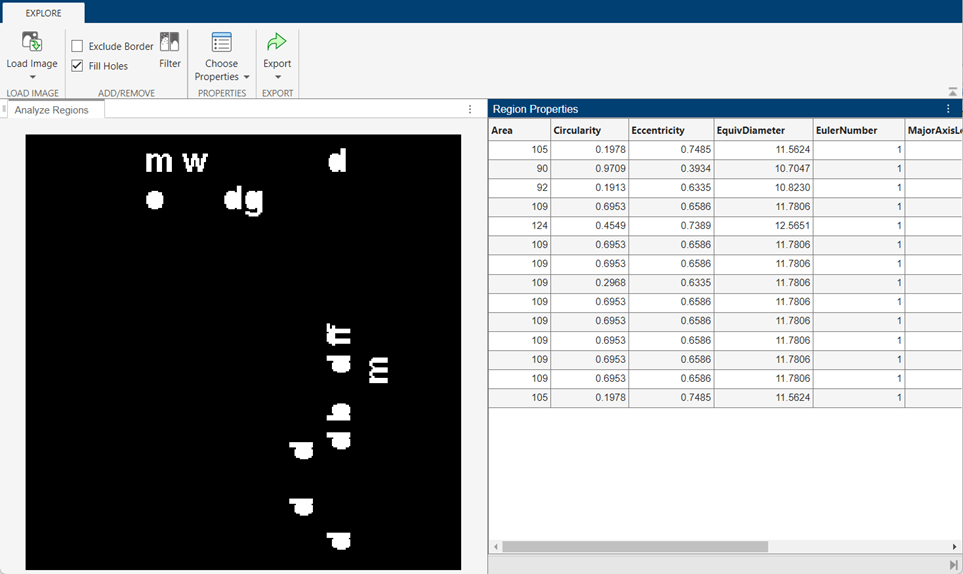图像滤波
卷积和相关性、预定义和自定义滤波器、非线性滤波、边缘保持滤波器
滤波是一种用于修正或增强图像的技术。例如,您可以对图像进行滤波以强调某些特征或删除其他特征。用滤波实现的图像处理运算包括平滑、锐化和边缘增强。
App
| 图像区域分析器 | Browse and filter connected components in image |
函数
主题
空间域中的图像滤波快速入门
- 什么是空间域中的图像滤波?
在经过空间滤波的图像中,每个输出像素的值是相邻输入像素的加权和。权重由称为卷积核或滤波器的矩阵提供。 - Filter Grayscale and Truecolor (RGB) Images Using imfilter Function
Filter an image with a 5-by-5 averaging filter containing equal weights. - Filter Images Using Predefined Filter
Create a type of special filter called an unsharp masking filter, which makes edges and detail in an image appear sharper. - imfilter 边界填充选项
当卷积或相关性核的一部分超出图像边缘时,可以通过对图像进行零填充或复制边界像素来外插图像值。
去噪滤波
- 去除噪声
使用平均值滤波、中位数滤波和基于图像局部方差的自适应滤波等方法来去除图像噪声。 - 将高斯平滑滤波器应用于图像
通过使用不同强度的各向同性和各向异性高斯平滑滤波器模糊图像来降低图像噪声。 - Reduce Noise in Image Gradients
Reduce noise associated with computing image gradients so that features can be more accurately detected.
边缘保持滤波
- 什么是引导图像滤波?
引导图像滤波对图像执行边缘保持平滑处理。它使用第二个图像(称为引导图像)的内容来影响滤波。 - Perform Flash/No-flash Denoising with Guided Filter
Reduce noise in an image while using a guidance image to preserve the sharpness of edges. - Segment Thermographic Image After Edge-Preserving Filtering
Segment a hot object from the background in a thermographic image.
积分图像域滤波
- Integral Image
Integral images are a quick way to represent images for filtering. In an integral image, the value of each pixel is the summation of the pixels above and to the left of it. - Apply Multiple Filters to Integral Image
Smooth an image by different amounts by applying box filters of varying sizes to the integral image.
频域滤波
- Design Linear Image Filters in the Frequency Domain
You can design filters that modify the frequency content of images. Filtering in the frequency domain is often faster than filtering in the spatial domain. - Specify Desired 2-D Frequency Response Matrix
The 2-D filter design functionsfsamp2,fwind1, andfwind2all create filters based on a desired frequency response magnitude matrix. - Calculate the Frequency Response of a 2-D Filter
Calculate and display the frequency response of a two-dimensional filter using thefreqz2function.


